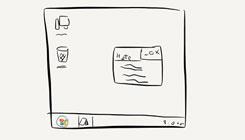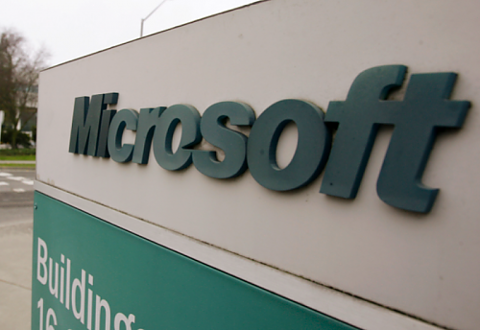
Microsoft begins a new era tomorrow with the release of the new generation of Windows, Windows 8. The success of the OS is critical to the company's future, especially when it comes to the mobile market. If Windows 8 doesn't get traction there Microsoft's aspirations to be a player could fade away, and its influence could dim overall as PC sales slow. With its Modern UI, Windows 8 is a one-size-fits-all solution designed for both PCs and tablets, with heavy emphasize on the latter. But early testers aren't taking the change kindly, arguing that Modern UI is hardly intuitive when used with keyboard and mouse. I've
written before about why Windows 8 is valuable despite Modern UI's shortcoming on a traditional desktop or laptop setups. Among other things, you can
keep yourself within the desktop environment most of the time. Until Modern UI catches on among users and developers, that should continue. But for how long, given that Microsoft wants Modern UI to take off so badly?
Hardware to Complement Software
Modern UI is designed with only one thing in mind -- touch screen. The horrible experience it presents with a mouse shows that old-fashioned approach is an afterthought. Some early testers were puzzled about why Redmond didn't provide users with the option to disable Modern UI completely and bring back the Start menu on machines without touch screen. But that will change. If the initial batch of Windows 8 devices made by Sony, Asus, Acer, and Samsung is any indication, most new PCs and laptops models will be boast touch screens, complementing the software they'll be running on. As older non-touch screen computers are replaced, more users will be able to experience Modern UI the way it's intended. And because of its tablet-like simplicity, the interface could emerge as the preferred way to perform simple tasks like checking weather, emailing, and making video calls.
Software Developers Choosing Sides
As users, especially the non-tech savvy ones, spend more time on Modern UI instead of the desktop, software developers with constrained resources constrained may have to choose which environment to work with. In a long run, there'll be a segregation between apps, with complex software -- like high-end video editors -- made exclusively for the desktop while simpler products appear only in the Windows Store. Indeed, the desktop will be seen as a professional-centric environment reserved for businesses and technical users, while average users choose to keep clear and stay in the less intimidating tile interface. By then, with a robust collection of apps in the Windows Store, Microsoft should have sufficient ammunition to launch an all-out battle with Apple's iOS and Google's Android. The question is: Will it happen? Will the transition be so thorough that the next generation of computer users will see the old Windows desktops the way we see MS-DOS today?
 Microsoft begins a new era tomorrow with the release of the new generation of Windows, Windows 8. The success of the OS is critical to the company's future, especially when it comes to the mobile market. If Windows 8 doesn't get traction there Microsoft's aspirations to be a player could fade away, and its influence could dim overall as PC sales slow. With its Modern UI, Windows 8 is a one-size-fits-all solution designed for both PCs and tablets, with heavy emphasize on the latter. But early testers aren't taking the change kindly, arguing that Modern UI is hardly intuitive when used with keyboard and mouse. I've written before about why Windows 8 is valuable despite Modern UI's shortcoming on a traditional desktop or laptop setups. Among other things, you can keep yourself within the desktop environment most of the time. Until Modern UI catches on among users and developers, that should continue. But for how long, given that Microsoft wants Modern UI to take off so badly?
Microsoft begins a new era tomorrow with the release of the new generation of Windows, Windows 8. The success of the OS is critical to the company's future, especially when it comes to the mobile market. If Windows 8 doesn't get traction there Microsoft's aspirations to be a player could fade away, and its influence could dim overall as PC sales slow. With its Modern UI, Windows 8 is a one-size-fits-all solution designed for both PCs and tablets, with heavy emphasize on the latter. But early testers aren't taking the change kindly, arguing that Modern UI is hardly intuitive when used with keyboard and mouse. I've written before about why Windows 8 is valuable despite Modern UI's shortcoming on a traditional desktop or laptop setups. Among other things, you can keep yourself within the desktop environment most of the time. Until Modern UI catches on among users and developers, that should continue. But for how long, given that Microsoft wants Modern UI to take off so badly?
 Microsoft begins a new era tomorrow with the release of the new generation of Windows, Windows 8. The success of the OS is critical to the company's future, especially when it comes to the mobile market. If Windows 8 doesn't get traction there Microsoft's aspirations to be a player could fade away, and its influence could dim overall as PC sales slow. With its Modern UI, Windows 8 is a one-size-fits-all solution designed for both PCs and tablets, with heavy emphasize on the latter. But early testers aren't taking the change kindly, arguing that Modern UI is hardly intuitive when used with keyboard and mouse. I've written before about why Windows 8 is valuable despite Modern UI's shortcoming on a traditional desktop or laptop setups. Among other things, you can keep yourself within the desktop environment most of the time. Until Modern UI catches on among users and developers, that should continue. But for how long, given that Microsoft wants Modern UI to take off so badly?
Microsoft begins a new era tomorrow with the release of the new generation of Windows, Windows 8. The success of the OS is critical to the company's future, especially when it comes to the mobile market. If Windows 8 doesn't get traction there Microsoft's aspirations to be a player could fade away, and its influence could dim overall as PC sales slow. With its Modern UI, Windows 8 is a one-size-fits-all solution designed for both PCs and tablets, with heavy emphasize on the latter. But early testers aren't taking the change kindly, arguing that Modern UI is hardly intuitive when used with keyboard and mouse. I've written before about why Windows 8 is valuable despite Modern UI's shortcoming on a traditional desktop or laptop setups. Among other things, you can keep yourself within the desktop environment most of the time. Until Modern UI catches on among users and developers, that should continue. But for how long, given that Microsoft wants Modern UI to take off so badly?


